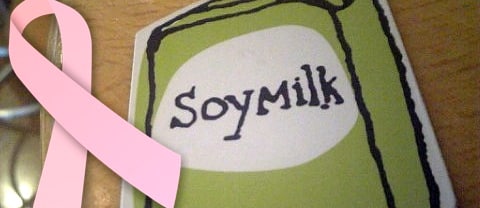In my two recent posts The Best Detox and Breast Cancer Stem Cells vs. Broccoli, I documented ways to 1) boost our liver’s ability to clear carcinogens, 2) make our DNA more resistant to toxins that make it past our first line of defense, and 3) then ramp up immune surveillance of any budding tumors—all in hopes of preventing cancer. But what about for those who already have it?
Though small consolation, one consequence of the fact that breast cancer is now the #1 cancer killer of young women is that breast cancer survival is a very active area of research. For example, a major study was recently published that followed 4,000 women with breast cancer for 7 years. Not all of them made it to the end. The researchers tried to figure out if there was anything about the diets of the non-survivors that may have played a role in their deaths. Two dietary components in particular were associated with an early death: saturated fat and trans fat.
Breast cancer survivors may decrease their risk of dying by 41% simply by avoiding saturated fat, found primarily in the American diet in cheese, chicken, and junk food (see my 3-minute video Breast Cancer Survival, Butterfat, and Chicken). And breast cancer survivors may improve their survival 78% by avoiding trans fat, found primarily in junk food and animal products (see my 1-minute video Breast Cancer Survival and Trans Fat). Ideally, everyone should try to minimize the intake of both, as explained in Trans Fat, Saturated Fat and Cholesterol: Tolerable Upper Intake of Zero.
On the other hand, the two foods expected to improve breast cancer survival are flax seeds and soy products. Breast cancer is initially so slow-growing that women may have tumors for years or even decades before they’re diagnosed (see my 1-minute video Cancer Prevention and Treatment May Be the Same Thing). So one might expect that the same dietary factors that helped grow the tumor in the first place would keep goading it on after diagnosis. This may not always be the case, though. Alcohol, for example, is strongly associated with breast cancer risk, but the data has been mixed as to whether once you already have a full-blown tumor, it makes a difference if you continue to drink or not. Still, in general, the diet that helps prevent breast cancer is the same diet that’s going to help prolong survival. And that certainly seems to be the case for the phytonutrients found in flax and soy.
Flax seeds are the most concentrated source of lignans, a class of cancer-fighting compounds that may cut breast cancer mortality risk in half (see my 3-minute video Breast Cancer Survival and Lignan Intake). Interestingly, there are no lignans actually found in the seeds, just precursors that the good bacteria in our gut turn into lignans. This may explain why women who have frequent urinary tract infections have higher breast cancer rates—the courses of antibiotics wipe out the gut flora critical to the production of these anti-cancer compounds (see my 2-minute Flax and Fecal Flora).
Soy foods appear to help prevent breast cancer and prolong survival more directly, though. In Breast Cancer Survival and Soy I review the only three human studies to date, all of which suggest soy is beneficial. Before we had any human data, rodent studies found conflicting results, and we just found out why. It turns out rats and mice metabolize the phytoestrogens in soy up to 150 times less efficiently than humans. The faulty old lab rat data continue to be cited by soy detractors, however, even though we now have studies published on thousands of actual breast cancer survivors. While the jury may still be out on whether to feed tofu to your pet rat, the verdict is in on soy in human beings: not guilty.
-Michael Greger, M.D.
